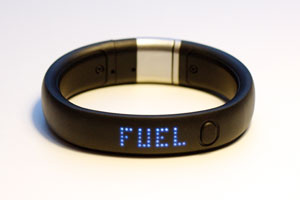Fitness wearables are in the news with the success of Fitbit’s IPO, which launched on June 18th this year at USD20 per share and reached nearly USD48 per share by August 3rd. Is this really the valuable market that many people obviously believe it to be? It’s certainly crowded, with a range of products at all price points.
Apple’s smart watch sport model costs USD350. Fitbit and Jawbone, its most similar competitor, are in the USD50-150 price bracket. And for the dedicated athletes, the Garmin portfolio of well-established sports watches, ranging from USD70 to USD500 at the top end offer very accurate tracking of a wide range of vital signs.
There are now also a number of low-end competitors, particularly in Asia. The Xiaomi mi band, a basic fitness tracker with a battery life of at least a month, costs around USD15 and has sold over 6 million devices since its launch in China in July 2014. In India, the Yu-fit at the same price also has a screen and tells the time, as well as being supplied with an app that counts calories for the Indian diet. You can now get a variety of smart watches in this price bracket which will tell the time, track activity and sleep patterns, and alert you to incoming calls. They may not be the most accurate devices but they’re good enough for a lot of people.
Despite all this activity, there is a question mark over how long it can be sustained. Is this going to be a short-lived craze, like pedometers in the 1980s? Machina Research is in the process of updating its forecasts for fitness bands as one of the elements in the Worried Well category of Connected Health and this issue is generating a lot of debate. We estimate that Fitbit has already shipped a device to one in three of the people who play sports in the US, and we suspect that 60% of these are at the back of the drawer within a year, once the novelty has worn off. Admittedly, the chance to get consistent data stored over months and years without any effort from the user is a new feature that the 1980s pedometers couldn’t offer, but will that be enough to sustain users’ interest?
Fitbit’s upmarket devices are at least reasonably accurate, but a device worn on the wrist will always tend to count arm movements rather than steps. Many of the cheaper ones overcount steps to a laughable degree, and are often inconsistent about doing it, so that even comparisons over time based on the same device are not very useful. A cheap fitness bracelet smart watch, with its inaccurate step counts and poor Bluetooth radio is going to be a fun accessory for a few months, but may well not be replaced.
Fitbit is supposedly deriving a significant share of its revenue from Corporate Wellness programmes, in which companies hand out Fitbits to their staff and monitor their activity in an effort to reduce the high cost of US healthcare. In the early days of such schemes, there were claims that companies could save several multiples of their outlay, but these have since been challenged by more detailed studies that have shown that these savings are largely illusory. The Obamacare law allows companies to penalise staff who won’t participate and the fines imposed are now seen by many commentators as the main source of savings. In Japan, the Metabo law requires companies to measure the waistlines of employees aged between 45 and 74 and keep them below 85cm for women and 90cm for men. The employer is required to ensure at least 65% participation and can be fined up to 10% of its current health insurance costs if it fails to do so. Japanese companies have handed out incentives such as tape measure towels, so fitness trackers may not be far behind.
There are already insurance companies offering discounts on health and life insurance to people who will wear a fitness tracker and allow the company to access their data. But once there is serious money involved, there is a high risk that the scheme will be abused. If you have pay-as-you-go insurance for your car, it is quite hard to switch the monitoring device to another vehicle, but if you have activity-related life insurance it is quite simple to get a fit teenager to wear your activity tracker while you snooze on the couch.
Clearly there are dedicated athletes who are willing to spend hundreds of dollars on a sports watch that monitors a range of vital signs. There are also people who will buy an expensive smart watch and possibly make use of its fitness monitoring functions (although Machina Research puts these in Consumer Electronics rather than Connected Health). There are also plenty of people willing to spend USD15 on a fun accessory for its novelty value. More serious markets such as corporate wellness and activity related life insurance may not reach the potential that was initially envisaged.  Will the fitness wearable have the longevity to remain a substantial element of the connected health market? Within Machina Research, we are still debating this, our subscribers will be able to find out our conclusions in September.
Will the fitness wearable have the longevity to remain a substantial element of the connected health market? Within Machina Research, we are still debating this, our subscribers will be able to find out our conclusions in September.
By Margaret Ranken, Principal Analyst, Machina Research










